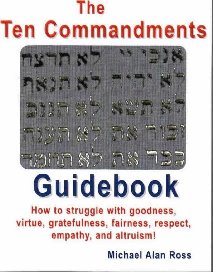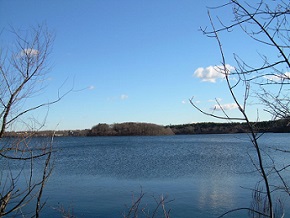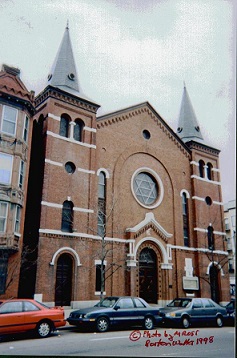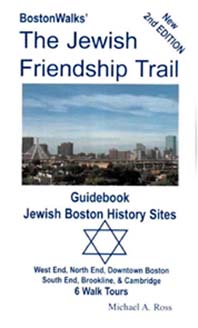CLICK HERE TO VIEW OUR MOST RECENT WEBSITE
JEWISH SITES & HISTORY IN PHOENIX AND SCOTTSDALE, ARIZONA
Discover Jewish History in Some of America's Greatest Cities!
Jewish Friendship Trail Guidebooks, as of 2020, only are available directly from the author/publisher. To purchase a Jewish Friendship Trail Guidebook, Email: BostonWalks
NOW AVAILABLE - (1) Phoenix Scottsdale Jewish Friendship Trail GuideBook
with 7 Tours of Sites of Phoenix Scottsdale Jewry!
Was $19.95 USD Now $8.00 USD + $3 Media Mail
Order your copy now directly from publisher.
(2) BostonWalks Jewish Friendship Trail GuideBook
with 6 Tours of Sites of Boston, Brookline, and Cambridge Jewry!
Was $19.95 USD Now $8.00 USD + $3 Media Mail
Order your copy now directly from publisher.
(3) BostonWalks The Ten Commandments GuideBook
with creative suggestions for approaching our Ten Commandments!
Was $19.95 USD Now $8.00 USD + $3 Media Mail
Order your reduced price copy now directly from publisher.
Email: BostonWalks




 Click Here to View the Table of Contents of Boston Walks The Jewish Friendship Trail |
| CLICK HERE TO ORDER NOW |
| CLICK HERE TO ORDER NOW |

Brooklyn Chai Live
Do you know how many Americans die yearly in car crashes?...
 ...How many?
...How many?


BostonWalksIntegrating the urban, modern Jewish American city experience with its historical sites and themes in such locales as Boston, MA, Portland, ME, East Bay and Providence, RI, and the Upper West Side of Manhattan, NYC.
|
![]() Filene
Filene![]() Best of Boston
Best of Boston![]() NYC UWS
NYC UWS![]() Brandeis
Brandeis ![]() Love Your Neighbor
Love Your Neighbor![]() Watertown, New Town, & Muddy River
Watertown, New Town, & Muddy River![]() Walk Near Water
Walk Near Water![]() Refute Hate
Refute Hate![]() Walk West/North Ends
Walk West/North Ends
Sing Sense to America
|
Celebrating 361 Years |
Now available!
The Jewish Friendship Trail Guidebook6 Self-Guided
Walking/Bicycling Jewish Boston History Tours Covers Boston,
Brookline, and Cambridge Softcover 198 pages with maps & b/w
photos |
Now available!
The Ten Commandments Guidebook Ways to Self-Struggle with
Classic Morals In Song, Poetry, and Prose
Covers 10 Commandments Plus One Other! Softcover 153 pages with
practical suggestions pages! |

Boston Walks presents
The Boston Walks
Jewish Friendship Trail
The Unique Ethnic History Walk
of
Boston MA
Walk Boston with
Brandeis, Filene, and Hecht!

Copyright ©
Michael Alan Ross, 1997-2018.
All Rights Reserved.
Email: BostonWalks


BostonWalks'
|
We've been leading walking tours of Boston for about ten years. So, when we were asked to devise a center of the city, Jewish walking tour of Boston, the Athens of America, we knew that we would walk many of Boston's streets and alleys before suggesting this friendship trail.Once known as a new Jerusalem, it wasn't until the mid-1800s - after various legal and attitudinal barriers were lowered, that Boston began to attract a community of Jews. During the years 1875 to 1925, approximately fifty to seventy thousand Jewish immigrants arrived and stayed in Boston. The City - which in the mid-1800s was a two-pronged peninsula with a narrow neck attaching it to the mainland - by 1900, had filled in both Mill Pond (joining its North and West Ends) and Back Bay (enlarging the lower and upper South Ends). The bulk of those fifty to seventy thousand Jewish immigrants initially settled in Boston's North and West Ends, including the back side of Beacon Hill down to the Charles River. Some of them initially settled in the lower and upper South Ends and many of them initially settled across the harbor in Chelsea and parts of East Boston. This BostonWalks' "The Jewish Friendship Trail" is designed as a 2.5 hour walking tour. To really explore these sites, consider ordering BostonWalks The Jewish Friendship Trail Guidebook. For now, though, let's vicariously walk, to these sites of Jewish Experience in Boston's West and North Ends circa 1870s through 1920s:
There is information about several buildings on Phillips Street which were used for Jewish retail as well as residential purposes from the turn of the century to the 1930s. But we're headed to the Vilner Shul, completed around 1920 here on Phillips Street. Founded by a landsmanschaften of Jewish immigrants from Lithuania some twenty years earlier, this chevra of Jews finally built this shul after occupying several other sites on the Street. A considerable amount of the labor in building the shul was provided by the immigrants themselves. While there is some debate about the origins of the aron kodish (the housing for the Torah scrolls), the aron kodish may well be a Sam Katz original or, perhaps, embellished with Sam Katz wooden ornaments. The shul is a fascinating reminder of a working class, small shul. Its active use was from the 1920s to the early 1980s.
As the thousands of Jewish immigrants poured into Boston before and after the turn of the century, the immigrants themselves, volunteers, and eventually social workers began establishing sites where immigrants and their children would have opportunities for job training, education to become American citizens, cultural life, and recreation. Two examples of these sites were:
Another example of the few sites which still exists is the West End House. The West End House evolved from an immigrant Jewish boys club, the Excelsior Club, which consisted of thirty-five Jewish boys who grouped together for sports, culture, and social gatherings. They also on occasion performed a play. It was the performance of one of their plays which eventually led to the funding of the West End House as a non-sectarian organization and the construction of this building. we're pleased to tell that story.
The synagogue which we're about to visit, officially, is called Beit HaMidrash HaGadol Beit Yaakov, known today as The Boston Synagogue. How that came to be also is a story.

|
To vicariously experience additional Jewish and other ethnic walking tours of Boston, click on the following websites:
Have you clicked on these on-line selections from the new, |

Order nowBostonWalks The Jewish Friendship
Trail Guidebook. Or Click on these websites for further tastes:
|
Now available!
Jewish Friendship Trail Guidebooks, as of 2020, only are available directly from the author/publisher. To purchase a Jewish Friendship Trail Guidebook, email JewishFriendshipTrail@yahoo.com
The Jewish Friendship Trail Guidebook6 Self-Guided
Walking/Bicycling Jewish Boston History Tours Covers Boston,
Brookline, and Cambridge Softcover 198 pages with maps & b/w
photos |
Now available!
The Ten Commandments Guidebook Ways to Self-Struggle with
Classic Morals In Song, Poetry, and Prose
Covers 10 Commandments Plus One Other! Softcover 153 pages with
practical suggestions pages! |


"West End House" circa 2004
Begun by 35 Jewish boys in 1903!
Click here to connect with more of
Boston's
Best!


Copyright ©
Michael Alan Ross,
1997-2018. All Rights Reserved.
Email: BostonWalks
by Michael Alan Ross |
![]() Filene
Filene![]() Best of Boston
Best of Boston![]() NYC UWS
NYC UWS![]() Brandeis
Brandeis ![]() Love Your Neighbor
Love Your Neighbor![]() Watertown, New Town, & Muddy River
Watertown, New Town, & Muddy River![]() Walk Near Water
Walk Near Water![]() Refute Hate
Refute Hate![]() Walk West/North Ends
Walk West/North Ends
Chazak Ve-ematz
|
















































Capitalist Commands
|
How do you imagine the relationship between freedom and responsibility within a democracy?
Check out this poetic interpretation:
In Defense of Liberty and Democracy, Freedom and Responsibilityconsidering the parasha of the week, Yitro. |
Isn't it time to Attract Middle Class Families Back into Our Cities?
Here's 10 Ways to bring middle-class families back into cities like NYC:
10 Ways to Bring Middle Class Families Back into New York City, Boston, Baltimore, Philadelphia, Washington, DC, Atlanta, and other Citiesconsidering the best of the suburban paradigm for our large cities. |
Are you curious about what are some of the ethical reasons for single-payer universal health care insurance?10 Moral Reasons for One Payer Universal Health Care Insurance for Americain light of Hillel's If I'm only for myself, what am I? |
|
We know that there are other belly laughs our there.
|
|